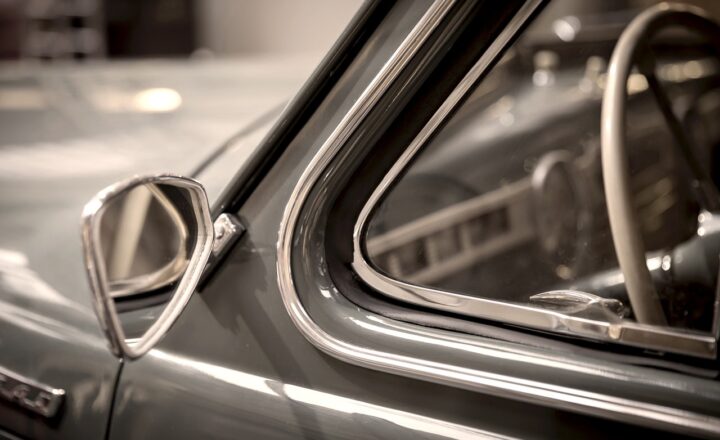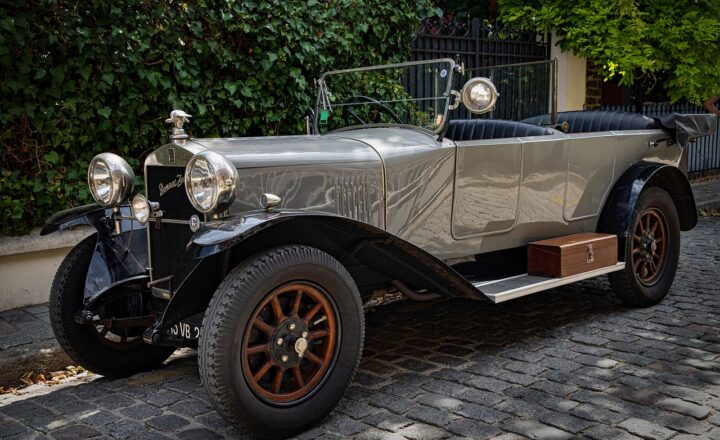The Hidden History of Classic Cars: What You Never Knew About Your Favorite Rides
November 19, 2024

Classic cars have a unique charm that captivates enthusiasts and casual admirers alike. From their stunning designs to their powerful engines, these automobiles tell fascinating stories of innovation, cultural shifts, and human ingenuity. In this article, we will explore the hidden history of classic cars, revealing insights and tidbits that might just surprise you.
1. The Birth of the Automobile: A Brief Overview
The journey of classic cars begins in the late 19th century. While several inventors contributed to the invention of the automobile, Karl Benz is often credited with creating the first gasoline-powered car in 1885. The Benz Patent Motorwagen marked a significant milestone in transportation, paving the way for mass production.
As cars gained popularity, manufacturers competed fiercely, leading to advancements in design and technology. The early 20th century saw the emergence of iconic brands like Ford, Chevrolet, and Rolls-Royce, each contributing uniquely to automotive history.
2. The Roaring Twenties: An Era of Glamour and Power
The 1920s was a significant decade for classic cars, characterized by luxury, excess, and innovation. As America prospered after World War I, automobile design took on a new level of sophistication. Cars were not just modes of transportation; they became status symbols.
Manufacturers began experimenting with streamlined designs, introducing features like electric starters and hydraulic brakes. Notable models from this era include the Cadillac V-16 and the Chrysler Airflow, both of which showcased cutting-edge technology and design principles that still influence cars today.
3. The Golden Age of American Cars
The post-World War II period, particularly the 1950s and 1960s, is often referred to as the Golden Age of American cars. A burgeoning economy, combined with a growing middle class, led to tremendous demand for automobiles.
Manufacturers responded by releasing some of the most iconic models in history. The Chevrolet Corvette, Ford Mustang, and Pontiac GTO emerged during this time, blending style, performance, and affordability. These cars are not just relics of a past era; they have become symbols of American culture, embodying freedom and rebellion.
4. The Influence of Pop Culture
Cars are more than just machines; they have been woven into the fabric of pop culture. Movies, music, and television shows have featured classic cars prominently, shaping perceptions and desires.
In films like “American Graffiti” and “Gone in 60 Seconds,” classic cars are central characters, symbolizing youth, adventure, and nostalgia. Songs like “Little Deuce Coupe” and “Fast Car” celebrate the romance of motoring, creating emotional connections between listeners and the automobiles they idolize.
5. The Rise of Collecting and Restoration
As automotive enthusiasts began to appreciate the artistry and engineering of classic cars, collecting and restoring became popular pastimes. Car clubs and events like car shows have emerged, providing platforms for enthusiasts to showcase their prized possessions and share their passion for classic cars.
Restoration of classic vehicles is both an art and a science, demanding skill, patience, and knowledge. Whether it’s a vintage Mustang or a rare Ferrari, restoring these cars to their former glory allows enthusiasts to connect with history while preserving automotive craftsmanship.
6. Environmental Considerations: The Future of Classic Cars
In recent years, a growing awareness of environmental issues has generated discussions about the future of classic cars. While these vehicles are often celebrated for their design and history, they also face scrutiny due to emissions and fuel efficiency.
Some classic car owners are turning to electric conversions, while others are advocating for sustainable fuels as a solution to preserve the classic experience while minimizing environmental impact. Organizations are also forming to promote the preservation of classic automobiles through sustainable practices, ensuring that their history is not lost while addressing modern concerns.
Conclusion: A Legacy on Wheels
Classic cars are more than mere objects; they are legacies on wheels, embodying advancements in technology and design while reflecting cultural shifts throughout history. Whether you’re a die-hard enthusiast or a casual admirer, understanding the hidden history of these vehicles enhances your appreciation for them.
From their fascinating origins to the impact of social trends and environmental considerations, classic cars continue to captivate and inspire. As we look to the future, preserving these marvels while respecting our planet is crucial in ensuring that the stories of our favorite rides live on for generations to come.






